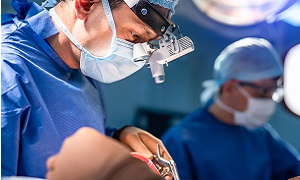Parathyroidectomy
Parathyroidectomy is the surgical removal of one or more of your parathyroid glands. The parathyroid glands are four rice-sized glands and they are located on the back of your neck’s thyroid gland. The parathyroid glands create the parathyroid hormone, which controls the calcium levels of the body.
For patients with hyperparathyroidism, one or more parathyroid glands can become enlarged and oversecrete parathyroid hormone, which can cause calcium levels in your blood to rise. Surgery of the enlarged gland is considered the only definitive treatment for the disorder and it is successful in around 95 percent of the cases.
Purpose
Your healthcare provider might recommend you for this surgery if one or more of your parathyroid glands are producing too much parathyroid hormone. This condition is known as hyperparathyroidism. It is generally caused by a tiny non-cancerous tumor which is known as an adenoma.
Generally, several factors are considered by your surgeon before he/she recommends this surgery and what type of surgery is going to be best for you.
Some of these factors are:
- Your age
- Calcium levels in your urine and blood
- Whether you are showing any symptoms
Preparation
Parathyroid glands are generally quite small. You might require tests to show exactly where your glands are. This will help your surgeon find your parathyroid glands during the surgery. Two tests that you might receive include a CT scan and an ultrasound.
Before surgery, an anesthesiologist will review your medical history with you to decide what kind of anesthesia to use.
Inform your doctor if you are or might be pregnant. Also let him/her known about what medicines, vitamins, herbs or other supplements that you are taking. Your doctor might also advise you to stop taking any blood thinners.
Procedure
You will first receive general anesthesia for the surgery. First, an incision is made in the center of your neck. After this, your surgeon will be looking for the four parathyroid glands and remove any of them that are diseased.
In some rare cases, when all four of these glands require removal, part of one is transplanted into the forearm. Or it might also be transplanted into a muscle in the front of your neck next to the thyroid gland. This can help to ensure that your body’s calcium level stays at a healthy level.
The surgery can be of different types, depending on where the diseased parathyroid glands are. Types of surgery include:
Minimally invasive parathyroidectomy
Minimally invasive parathyroidectomy– You might receive a shot of a tiny amount of radioactive tracer before this surgery. This will help highlight your diseased glands. If you have this shot, your surgeon will use a special probe, for locating the parathyroid gland. Your surgeon will next make a small incision on one side of your neck, after which he/she will then remove the diseased gland through it. This procedure takes around an hour.
Video-assisted parathyroidectomy
In video-assisted parathyroidectomy, your surgeon will first make two small cuts in your neck. One is for instruments, and the other one is for a camera. Your surgeon will be using the camera for viewing the area and will remove the diseased glands with the instruments.
Endoscopic parathyroidectomy
Your surgeon will make two or three small cuts in the front of your neck and one cut above the top of your collarbone. This reduces visible scarring, pain and recovery time. This cut is usually less than 2 inches. The procedure for removing any parathyroid glands which are is quite similar to video-assisted Parathyroidectomy.
The procedure can take anywhere between 30 minutes to three hours after you are asleep. It generally depends on how quickly the doctors can find and confirm the removal of the abnormal gland.
After the procedure
Generally, people are able to go home the same day of the surgery. You might be able to start your everyday activities in a few days. It can take around three weeks for you to heal fully.
If you feel any numbness or tingling around your mouth for around 48 hours after the surgery, you need to inform your doctor.
You will also need to have routine blood checks to check your calcium level.
Risks
There might be risks of the anesthesia which can include:
- Reaction to medicines or breathing problems
- Bleeding, blood clots or infection
Risks of the procedure itself include:
- Injury to the thyroid gland
- The need to remove a portion of the thyroid gland
- Hypoparathyroidism. This can lead to low calcium levels which are dangerous to your health.
- Injury to your nerves going to the muscles that move the vocal cords. You might even end up with a hoarse or weaker voice which could be temporary or permanent.
- Though it is very rare, sometimes you can experience difficulty in breathing and it almost always goes away several weeks or months after surgery.

